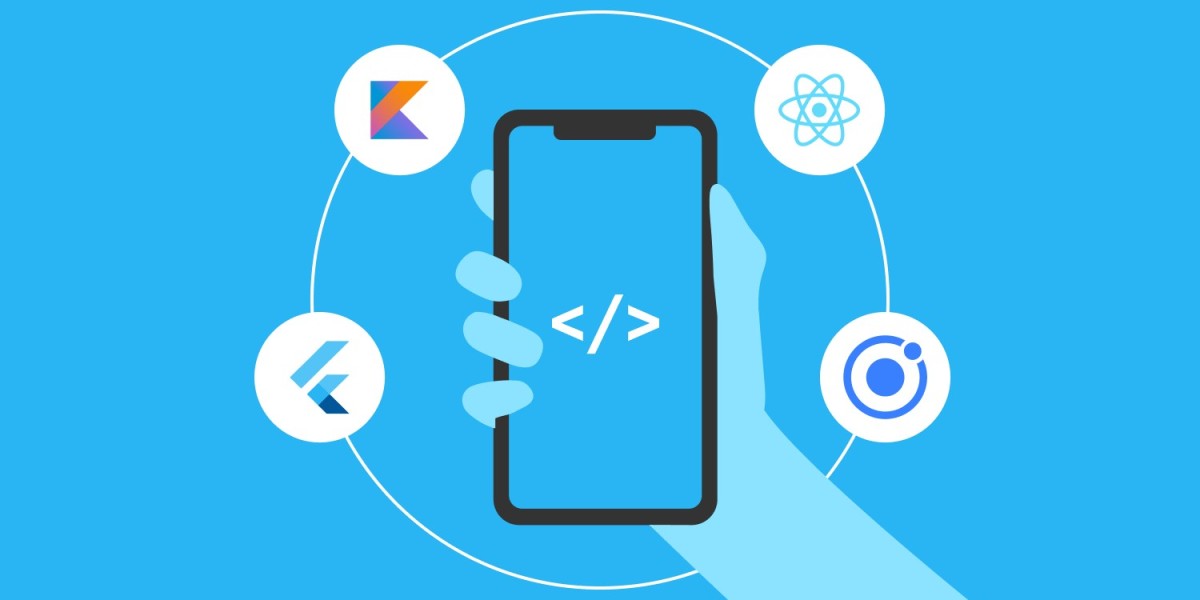Customers expect seamless experiences across devices whether they’re on a smartphone, tablet, desktop, or even a wearable. This demand for unified user experiences is pushing businesses to look beyond traditional single-platform development. Enter cross-platform development solutions, a core component of modern application development solutions, enabling organizations to create apps that work flawlessly across multiple operating systems and device types.
Instead of building separate apps for iOS, Android, and web, businesses can now develop once and deploy everywhere reducing costs, speeding up time-to-market, and ensuring consistent brand and functional experiences. In 2025, cross-platform development isn’t just a cost-saving measure; it’s a competitive advantage.
Why Cross-Platform Development Matters
1. Growing Multi-Device Usage
Today’s users often switch between devices throughout the day. A seamless experience across platforms increases user satisfaction and engagement.
2. Faster Development Cycles
Building a single codebase for multiple platforms cuts development time significantly, allowing businesses to release updates faster.
3. Cost Efficiency
Instead of funding separate teams for different platforms, one unified development effort saves resources without compromising quality.
4. Brand Consistency
Cross-platform frameworks ensure that design, features, and user experience remain consistent across devices.
Technologies Driving Cross-Platform Application Development Solutions
Several powerful frameworks and tools are enabling high-quality cross-platform development:
Flutter: Google’s UI toolkit for creating natively compiled applications from a single codebase.
React Native: Facebook’s framework that allows developers to use JavaScript and React to build apps for mobile platforms.
Xamarin: A Microsoft tool that uses .NET and C# to build cross-platform apps.
Progressive Web Apps (PWAs): Web applications that work offline and deliver app-like experiences.
Unity: Not just for gaming increasingly used for interactive, cross-platform app experiences.
Key Benefits of Cross-Platform Development
Benefit | Business Impact |
Unified Codebase | Reduced maintenance complexity. |
Lower Development Costs | Single team, single effort. |
Faster Time-to-Market | Competitive advantage in product launches. |
Wider Market Reach | Access to both iOS and Android users simultaneously. |
Easier Updates | Deploy changes across all platforms at once. |
Challenges and Solutions in Cross-Platform Development
Challenge 1: Performance Optimization
Cross-platform apps sometimes face performance lags compared to native apps.
Solution: Use hardware acceleration, optimize code, and choose frameworks that compile to native code.
Challenge 2: Platform-Specific Features
Not all device-specific features are easily accessible.
Solution: Implement native modules for critical platform-specific functionality.
Challenge 3: UI/UX Consistency
Ensuring the same look and feel across devices can be tricky.
Solution: Leverage responsive design principles and flexible UI components.
Best Practices for Cross-Platform Application Development Solutions
Choose the Right Framework – Base your decision on the app’s complexity, required features, and future scalability.
Focus on UI/UX Adaptability – Ensure your app adapts to various screen sizes and resolutions.
Integrate Continuous Testing – Automate testing across devices to maintain quality.
Prioritize Security – Encrypt data, implement secure APIs, and follow platform-specific compliance standards.
Plan for Offline Capabilities – Many cross-platform apps benefit from offline functionality to improve user experience.
Real-World Applications of Cross-Platform Development
E-Commerce
Platforms like Shopify and eBay utilize cross-platform approaches to ensure smooth shopping experiences across devices.
Banking & Finance
Mobile banking apps use cross-platform strategies to maintain secure, consistent interfaces across Android, iOS, and web.
Healthcare
Telemedicine platforms rely on cross-platform solutions to reach patients on any device with the same level of care.
Education
E-learning platforms like Coursera use cross-platform approaches to make courses available across devices seamlessly.
Travel & Hospitality
Booking platforms ensure that travelers have access to consistent booking experiences on mobile, tablet, and web.
The Future of Cross-Platform Development in 2025 and Beyond
The evolution of application development solutions will see cross-platform strategies become even more sophisticated:
AI-Powered Optimization: Machine learning models will automatically optimize performance for each platform.
Unified Cloud Deployment: Cloud-native development will allow apps to update instantly across all devices.
AR/VR Integration: Cross-platform frameworks will integrate immersive experiences.
Wearable and IoT Compatibility: Beyond mobile and web, apps will seamlessly extend to smartwatches, connected devices, and smart home platforms.
Businesses investing in cross-platform development now are setting themselves up to reach broader audiences with greater efficiency in the coming years.
Conclusion
Cross-platform development is more than a shortcut it’s a strategic component of modern application development solutions. By enabling businesses to deliver consistent, high-quality experiences across devices, it improves efficiency, reduces costs, and accelerates time-to-market.
With the right strategy, technology stack, and development partner, organizations can build future-ready applications that engage users wherever they are on the web, mobile, or beyond.
FAQs:
1. What is cross-platform development?
Cross-platform development is the process of creating applications that can run on multiple operating systems and devices using a single codebase.
2. Are cross-platform apps as fast as native apps?
With modern frameworks like Flutter and React Native, performance is often comparable to native apps, especially with proper optimization.
3. How much can I save with cross-platform development?
Businesses can save up to 40% in development costs by avoiding duplicate work for separate platforms.
4. Can cross-platform apps access device-specific features?
Yes, developers can use native modules to access device-specific functionalities when needed.
5. Which industries benefit most from cross-platform application development solutions?
E-commerce, banking, healthcare, education, and travel see significant benefits due to their need for broad user reach and consistent experiences.








